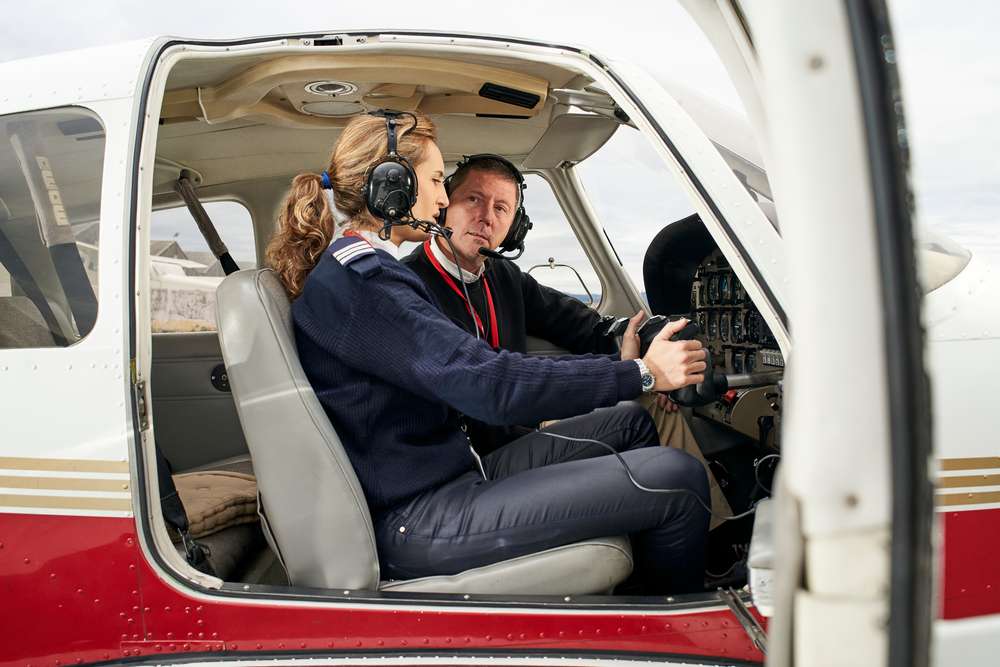Aviation Training Explained: Path to Becoming a Pilot
Explore the complete roadmap to becoming a pilot, from classroom theory to real-world cockpit skills. This guide covers ground school, flight training, instrument and cross-country instruction, simulators, license timelines (PPL, CPL, ATP), aircraft types, costs, and career paths—everything aspiring aviators need to plan their training journey and make informed choices.

Entering aviation training means blending academic study with practical flying to develop the judgment, techniques, and confidence required to command an aircraft. Trainees typically begin with classroom lessons and then move into progressively advanced flight practice. That hands-on phase teaches control inputs, takeoffs and landings, navigation by both visual references and instruments, and responses to abnormal or emergency events. Instruction advances from fundamental maneuvers to complex procedures as students build hours and capability.
Flight training: from basics to advanced skills
After completing ground school, a trainee’s time largely shifts into the cockpit. Early lessons emphasize basic handling: taxiing, climbing and descending, turns, stalls, and straight-and-level flight. As competence grows, lessons expand to precision takeoffs and landings, traffic patterns, and emergency drills. Instrument skills are introduced to enable flying solely by reference to cockpit instruments—a critical requirement for operations in low-visibility or cloud conditions. Simulators also play an important role: modern devices let students rehearse instrument approaches, system failures, and emergency scenarios in a safe, repeatable environment before encountering them in real flight.
How long does pilot training take?
Training length depends on the license targeted and whether study is full-time or spread over months. A typical Private Pilot License (PPL) can be earned in roughly 3 to 6 months with focused study, commonly requiring around 40–60 hours of logged flight time alongside ground instruction. A Commercial Pilot License (CPL) is more demanding: full-time students often spend 12 to 18 months to accumulate flight hours, advanced training, and pass exams. Airline Transport Pilot (ATP) certification represents the pinnacle and usually requires several years of total flying experience, plus meeting minimum flight time thresholds and testing requirements. Individual progress varies with weather, training frequency, and student ability.
What aircraft are used for training?
Flight schools use several aircraft types at different training stages, chosen for cost, complexity, and relevance to a student’s goals:
- Single-engine piston airplanes — Common for initial instruction. Examples: Cessna 152 and 172, Piper Cherokee.
- Multi-engine piston airplanes — Used for advanced multi-engine ratings and training. Examples: Piper Seneca, Beechcraft Baron.
- Light sport aircraft — Attractive for recreational pilots and basic training because of lower operating costs.
- Turboprops — Occasionally introduced later to teach pilots about higher-performance systems and turbine engines.
- Flight simulators — Essential training tools for procedure practice, instrument time, and emergency handling without aircraft risk.
Core elements of an aviation training program
A comprehensive training syllabus covers multiple skill areas that together produce safe, capable pilots:
- Ground school: The theoretical base covering aerodynamics, aircraft systems, meteorology, navigation, and aviation regulations.
- Flight training: Supervised flying practice that builds motor skills, situational awareness, and decision-making.
- Instrument training: Procedures and techniques to fly reliably using cockpit instruments alone.
- Cross-country flying: Navigation and planning for longer trips that build route-finding and flight-planning competence.
- Emergency procedures: Drills and scenarios to prepare for engine failures, system malfunctions, and other in-flight contingencies.
- Crew Resource Management (CRM): Communication, teamwork, and judgment training—especially important for multi-crew airline operations.
Typical costs and what they cover
| License Type | Estimated Cost Range | Training Duration |
|---|---|---|
| Private Pilot License (PPL) | $10,000 - $20,000 | 3-6 months |
| Commercial Pilot License (CPL) | $30,000 - $80,000 | 12-18 months |
| Airline Transport Pilot (ATP) | $80,000 - $150,000 | 2-4 years |
Prices, rates, or cost estimates mentioned are based on the latest available information and may change over time. Independent research is advised before making financial decisions.
These figures generally include aircraft rental or flight time, instructor fees, ground-school tuition, study materials, and exam costs. Additional outlays often apply: medical examinations, headsets and flight bags, textbooks or electronic subscriptions, insurance, and potential living or commuting expenses while training.
Career paths after training
Completing formal aviation training opens many professional and recreational options. Common routes include:
- Commercial airline pilot — flying scheduled passenger aircraft.
- Corporate or business jet pilot — operating private company aircraft.
- Flight instructor — teaching new students and building flight hours.
- Charter pilot — flying on-demand services for passengers or cargo.
- Cargo pilot — transporting freight for logistics operators.
- Specialized roles — aerial surveying, photography, agricultural applications (crop-dusting), search and rescue, or test piloting.
Pilots may also transition into related sectors such as air traffic control, aviation management, safety oversight, or aircraft maintenance and manufacturing.
Final considerations
Becoming a pilot is demanding but highly rewarding. Progress depends on the quality of instruction, access to aircraft and simulators, weather, and your own study rhythm. Careful planning—factoring in time, cost, and the specific certificate you want—will make the training journey smoother. With solid ground knowledge, disciplined flight practice, and ongoing learning, a trainee can move from the first solo flight to advanced ratings and a fulfilling career in the skies.






